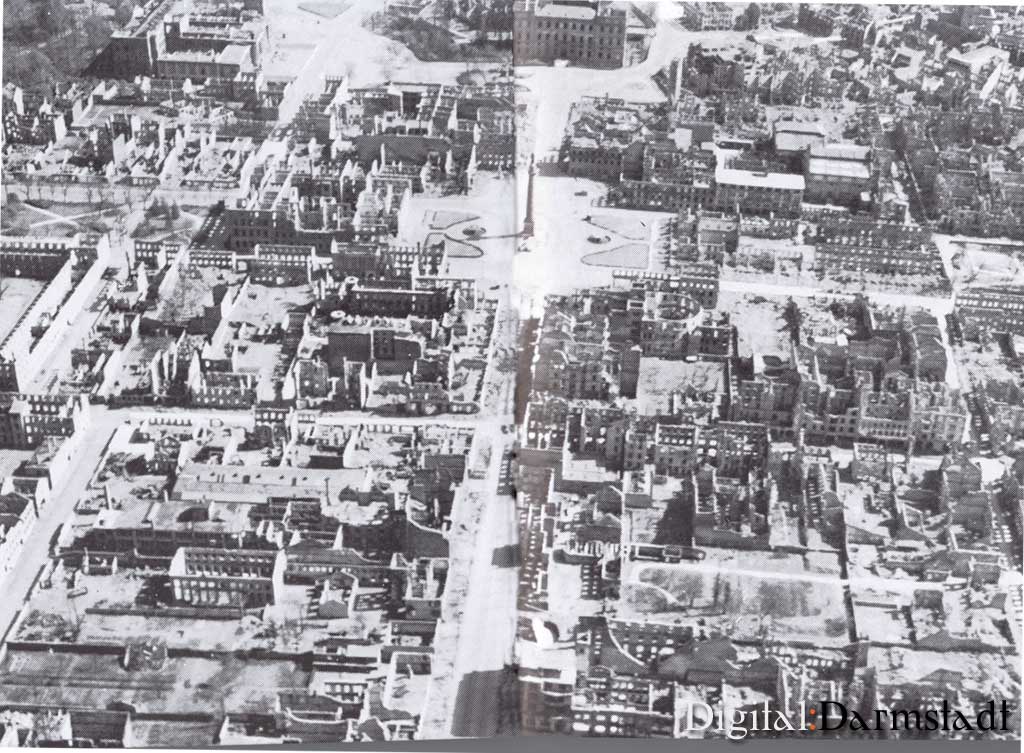
Brandnacht Darmstadt
11 September 1944
Bomber Command had always listed Darmstadt as a target city and the 1944 Guide to the Economic Importance of German towns and Cities graded industrial targets there accordingly. Listed as Grade 1 Target, the pharmaceutical giant Merck, was clearly the primary industrial target in Darmstadt. The chemical complex of Röhm and Haas was set as a Grade 2 target while Grade 3 was assigned to the grinding machine manufacturer, Eisenwerk Eberstad, stone saw manufacturer Adolf Reisterer, and the diesel engine builder Motroenfabrik Damstadt. The day after the September 11th attach British reported that Darmstadt was '...a centre of the enemy's chemical industry' however it is still not know today why Darmstadt was finally chosen for destruction." (excerpted from Americans in Darmstadt - 1945 - "Die Amis Komme!")
After the events of 911 the American and German communities joined together on 11 September, from 2002 to 2008, to mourn and remember a date that brought such misery to their nations. Eventually a symbolic plaque was placed on the wall outside the main gate at Kelley Barracks and representatives from each community would gather there for a ceremony. The last commemoration was held on 11 September 2008, and the plaque was later removed. It was reported that the plaque was to be placed at the Waldfriedhof, in Darmstadt, joining the graves of many of those that died in the 1944 bombing. I do not know if this has happened yet but my wife, Inge, is going to visit Germany this year and I have asked her to visit the cemetery to look for the plaque. If it is there she will take photos, which will be added to this page at a later date.
.jpg)
Before the Bombing
Photos of Darmstadt in the 1930's and 40's
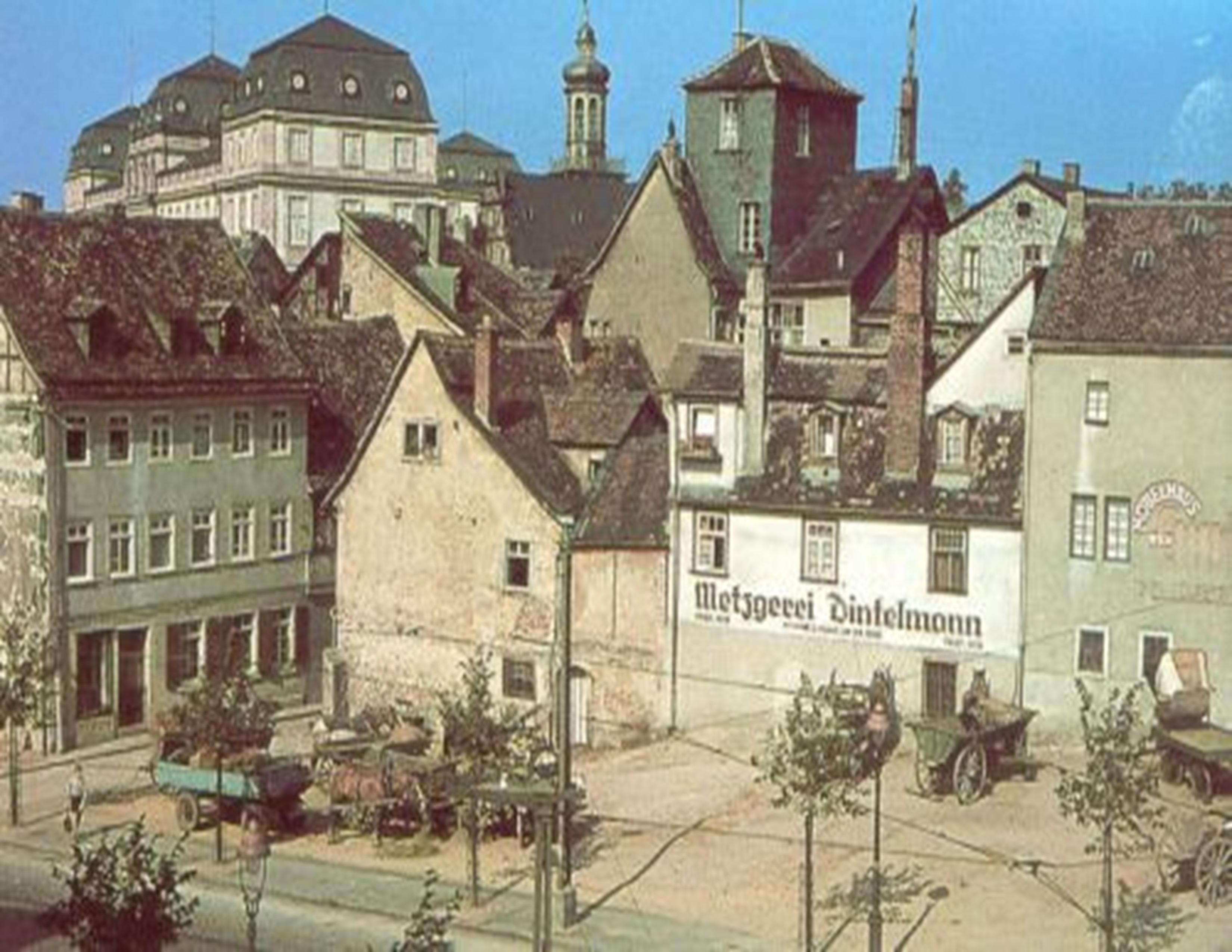
Part of the city center just off from the Schloss in the 1930's. (Stadtarchiv Darmstadt)
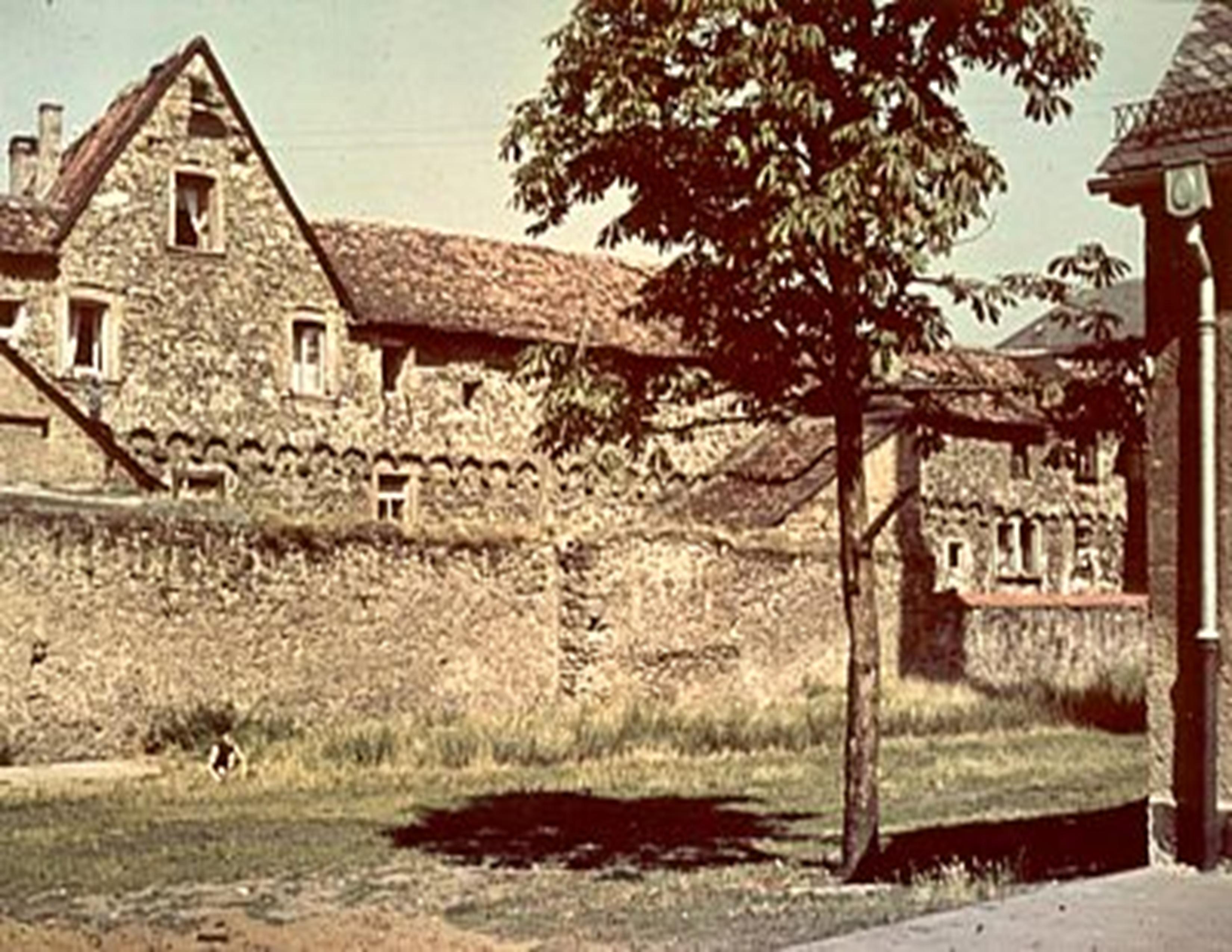
Part of the old city wall. There is very little of the wall left in Darmstadt today. In the early 2000's a new hall was built in Darmstadt that incorporated part of the wall into its scheme. (Stadtarchiv Darmstadt)
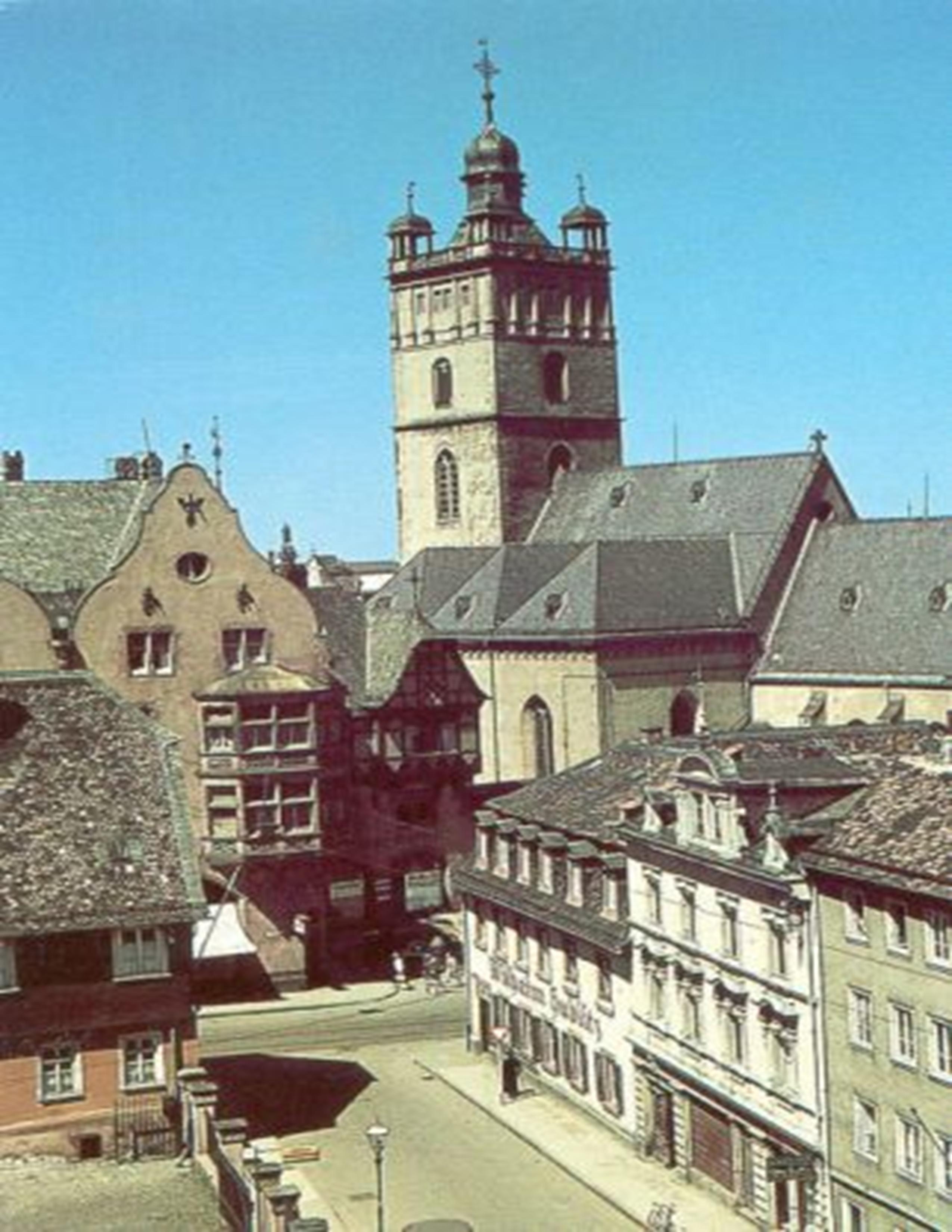
St. Peter's Kirche in the 1930's. (Stadtarchiv Darmstadt)
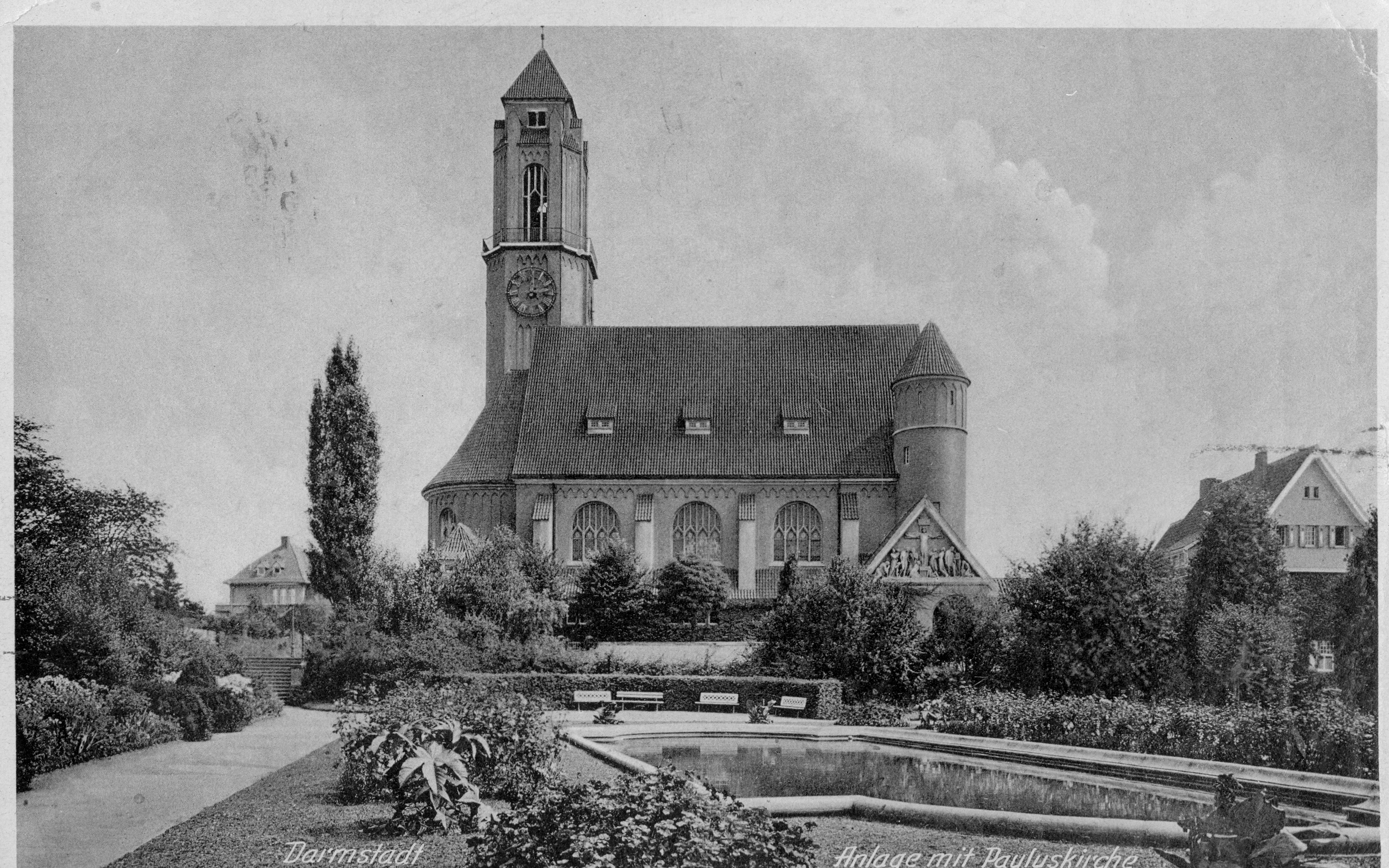
Stadtlirche in the 1930's. The church was not rebuilt after the war and today is a lasting memorial to the night of the bombing and to those who died. (Robinson Archives)
.jpg)
Wedding Tower and the Russian Chapel. The tower is affectionately called Fuenf Finger Turm (5-Fingered Tower) by city natives. During the bombing an aircraft spotter had a front row seat to the attack, at the very top of the tower. The chapel was built by Russia when Czar Nicholas married Darmstadt native Princess Alexandria, in the early 1900's. The soil under the chapel was carted in from Russia so that Nicholas could meet the requirement that he be married on Russian soil. (Robinson Archives)
.jpg)
A view of the Darmstadt Stadtsmuseen (City Museum), on the left and the Alte Oper (Old Opera). Today the Alte Oper houses the Stadtarchiv. As far as I know Dr. Peter Engels is still hard at work there. (Robinson Archives)
.jpg)
Darmstadt city center in the 1930's, looking from the tower honoring Grand Duke Ernst Ludwig I to the Schloss. (Robinson Archives)
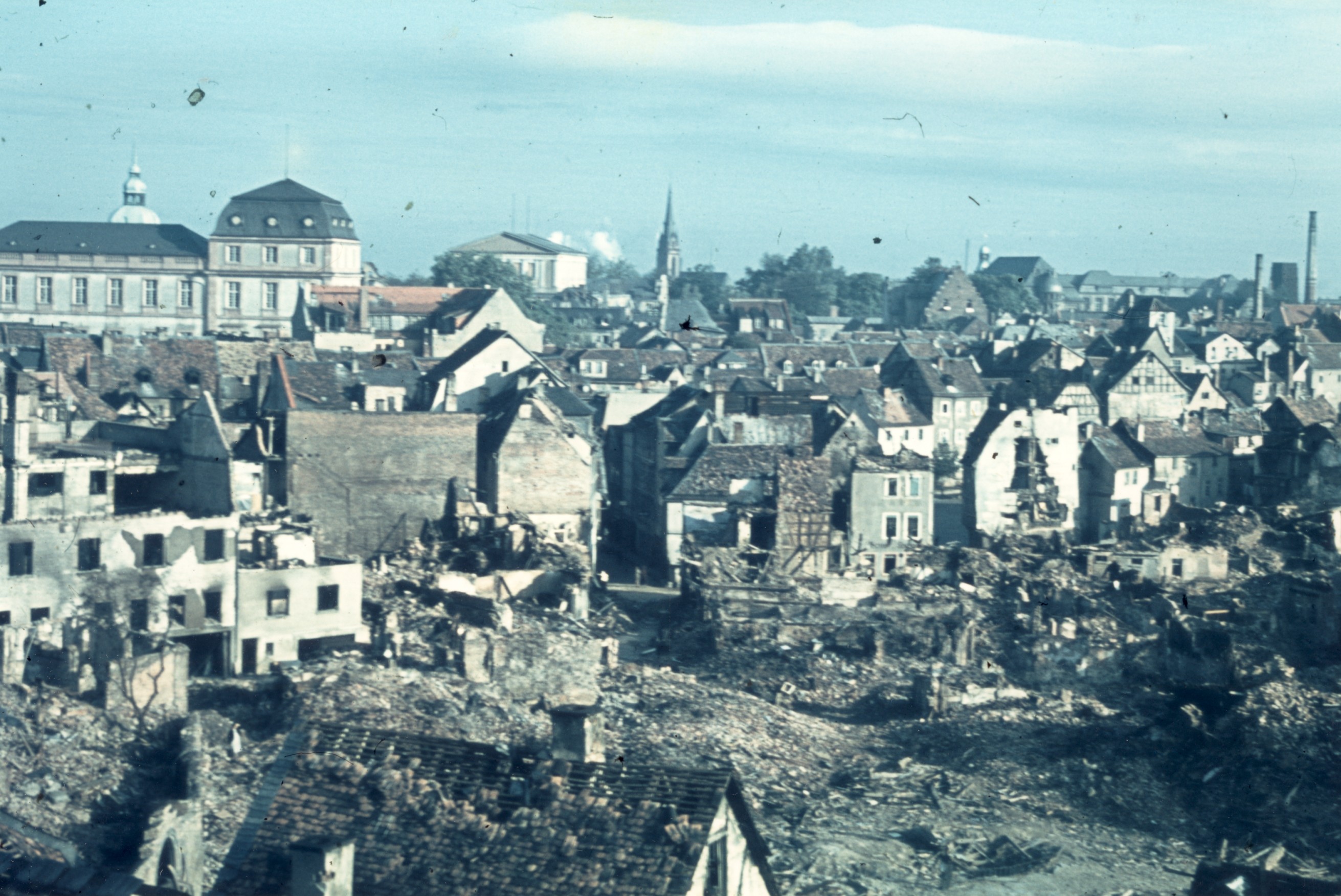
Darmstadt city center in August, 1944. (Stadtarchiv Darmstadt)
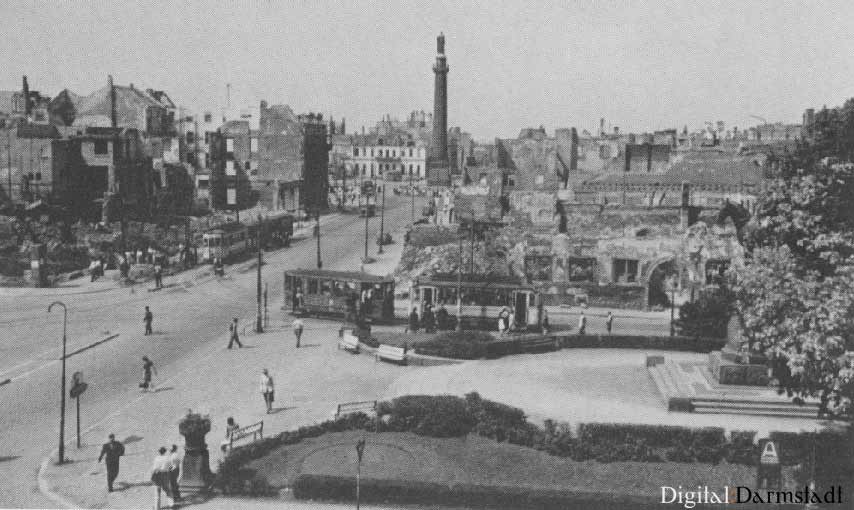
Darmstadt center in the 1930's. (Online Archives)
.jpg)
The main gate at Hutier Kaserne in August, 1944. (Robinson Archives)
.jpg)
Adolf Hitler Platz in August, 1944. This is called the Luisenplatz today. (Robinson Archives)
.jpg)
Bismarck Platz in August, 1944. (Robinson Archives)
.jpg)
Darmstadt Schloss in August, 1944. This was the residence of the Grand Duke of Hesse. Darmstadt was the capital of Hesse-Nassau. The capital was moved to Wiesbaden after the war. (Robinson Archives)
.jpg)
Darmstadt Hauptbahnhof (train station) in August, 1944. (Robinson Archives)
.jpg)
Neuer Kavallerie Kaserne (New Cavalry Barracks) in August, 1944. This was a horse regiment but the horses were replaced by bicycles. Photos of these bicycle troops will be seen on the Kasernes page. (Robinson Archives)
11 September 1944
British Attack
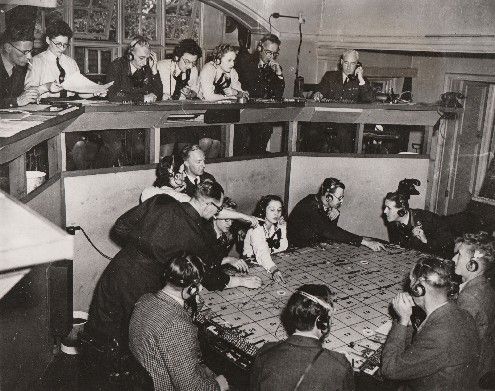
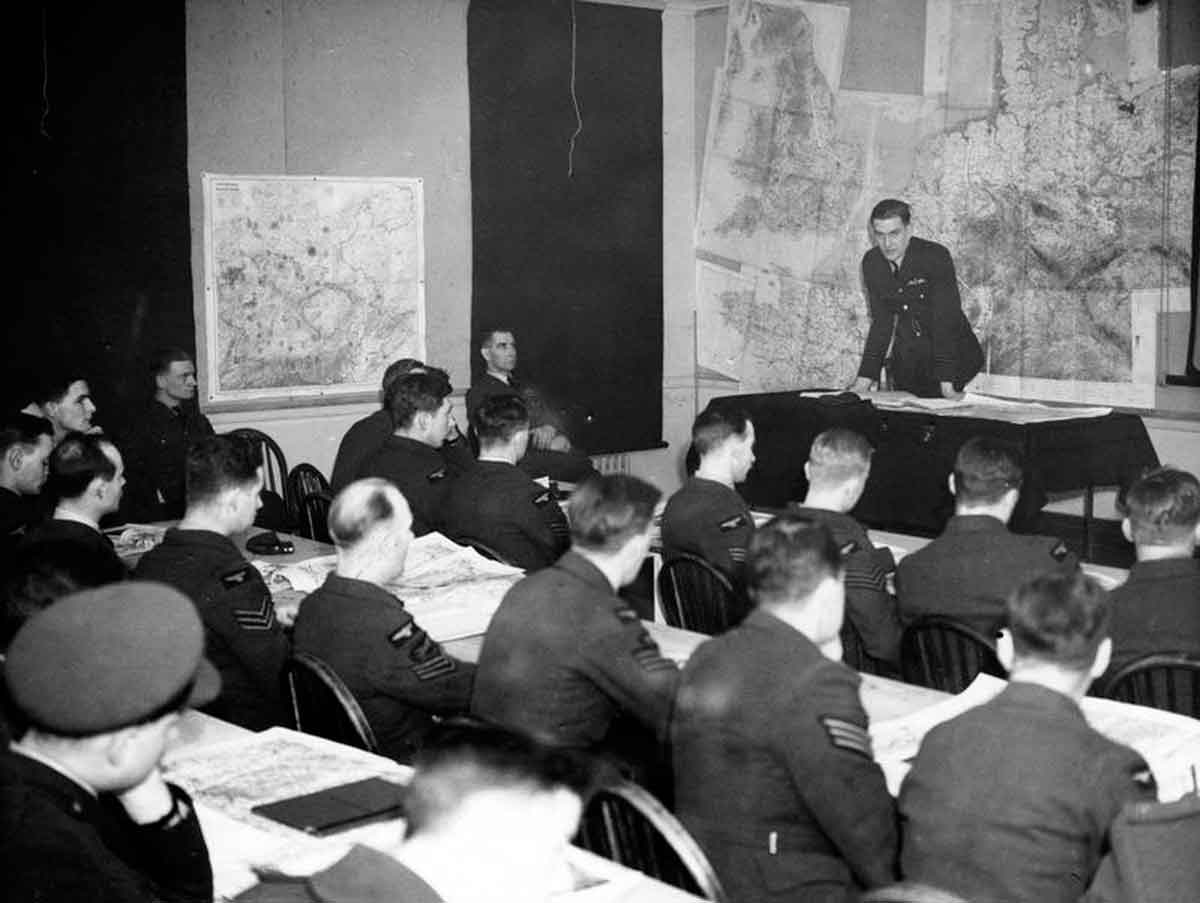

Since the receipt of the attack mission Lancaster and Mosquito ground crews were busy loading the designated high explosive and incendiary bombs needed for the attack. The Lancaster crew can be seen here, watching the their ground crew prepare the plane.
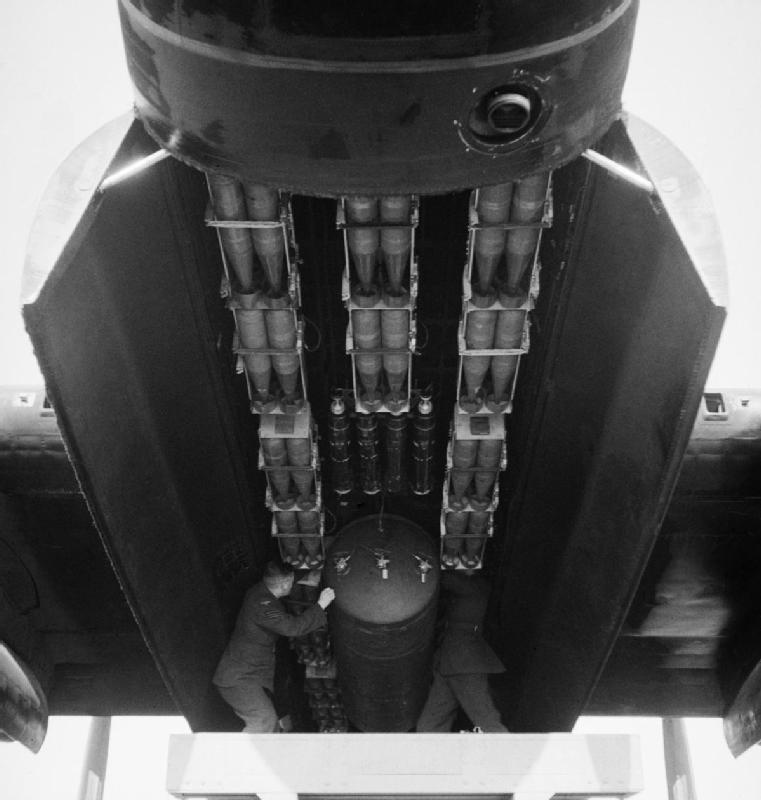
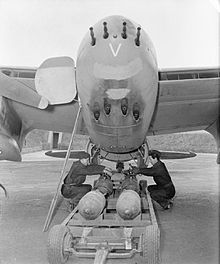
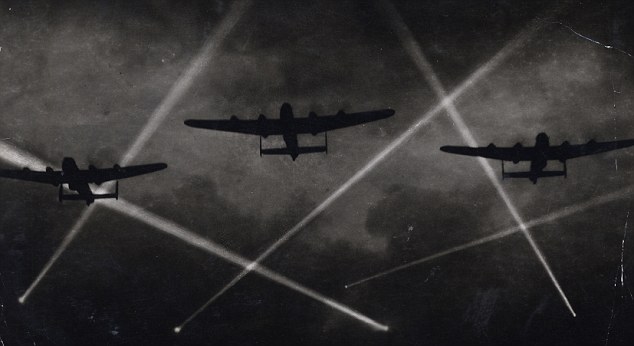
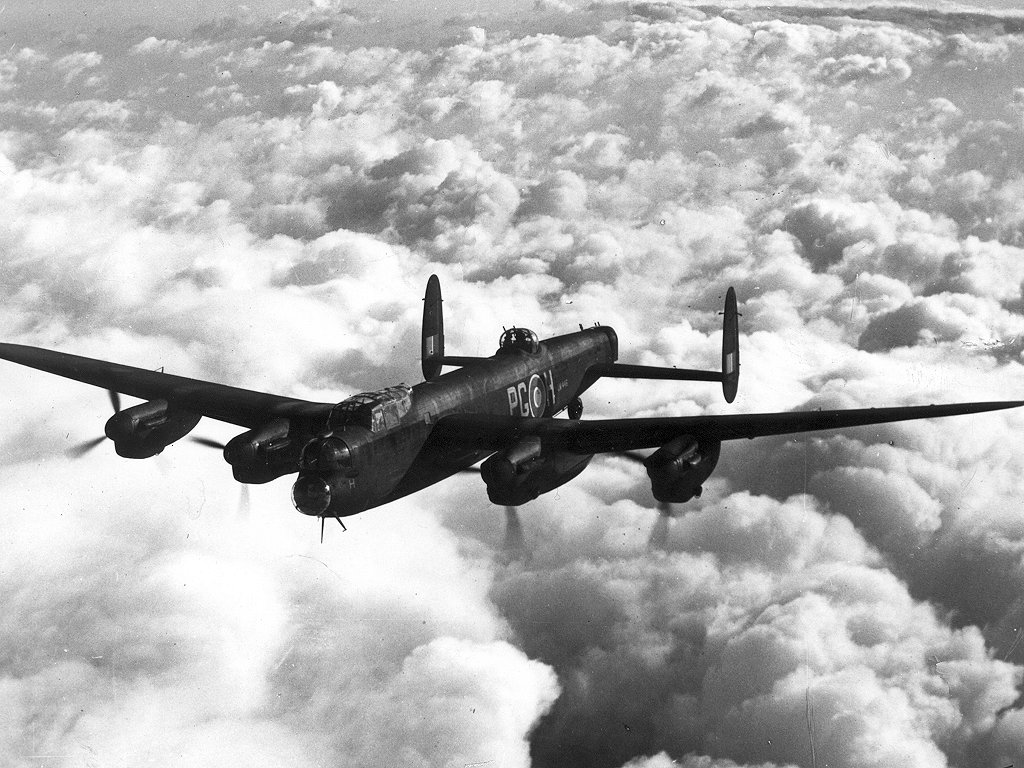
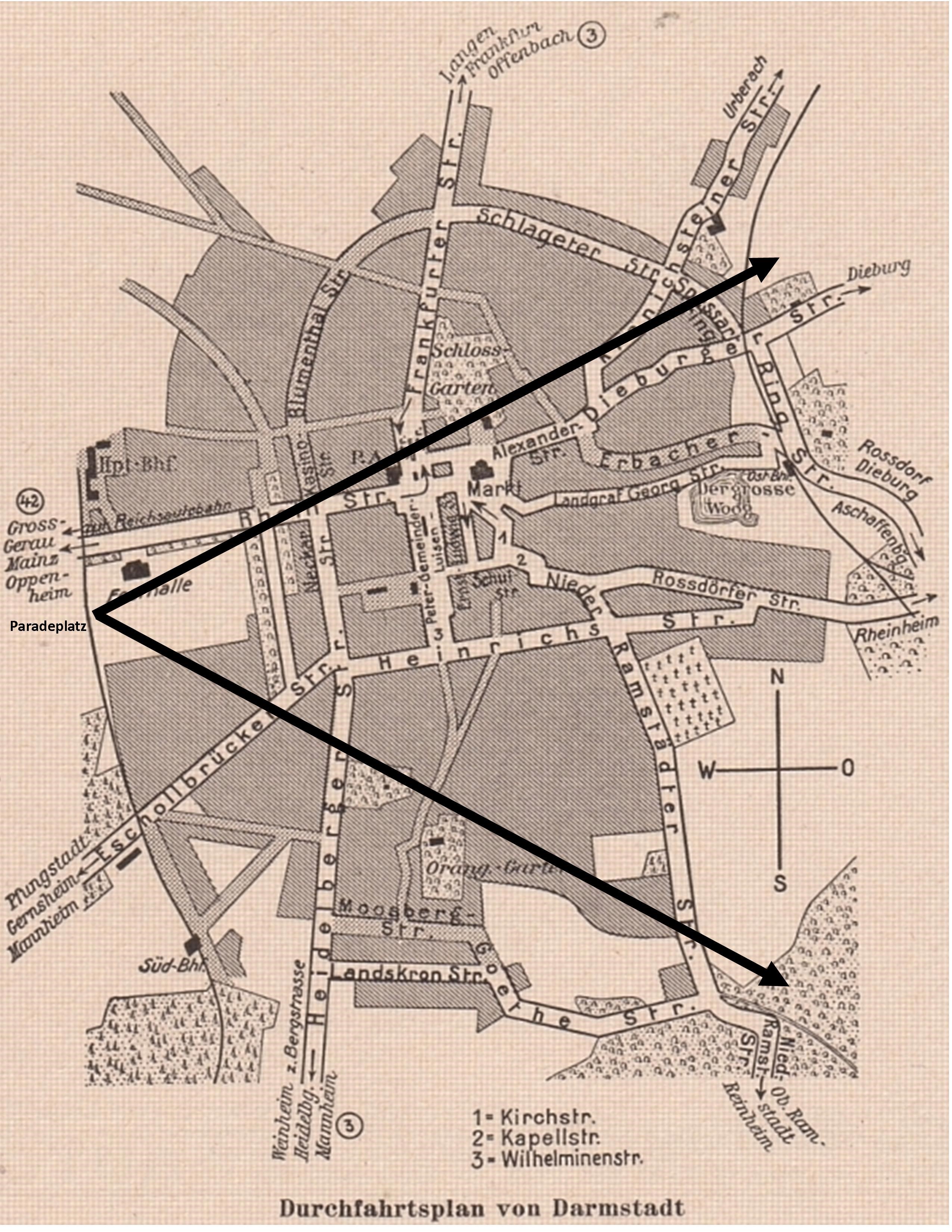
Next came the aircraft to mark the sides of a "fan". The first wave marked the left side of the fan with green flares. When one set of flares struck the main railroad station an aircraft came in and dropped yellow flares over the green. This was signal to the following bombers to disregard that drop site. The wave of bombers dropped yellow flares on right side of the fan. Wave three bombers dropped high explosive bombs, creating "...pressure waves that tore the roofs off the wooden buildings...opening them up for the following waves, exposing the wooden rafters and insides of the buildings to incendiary bombs." The people of Darmstadt came to call this drop "The Death Fan".
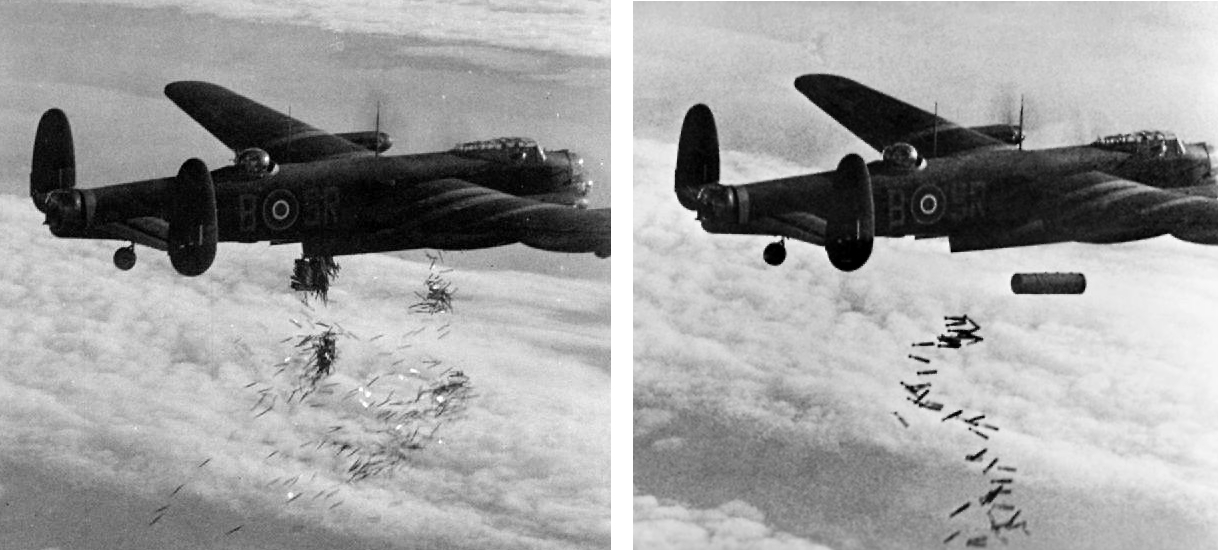
Lancaster bomber dropping Bombs In the third wave aircraft, like the one on the right , would drop high explosive and an air mine(?) bombs. In the following waves aircraft, like the one on the left, would drop incendiary bombs. The is a British bomb run over Duisburg, Germany.

Lancaster bomber flying over Germany, anti-aircraft shells and flares illuminating the night sky.
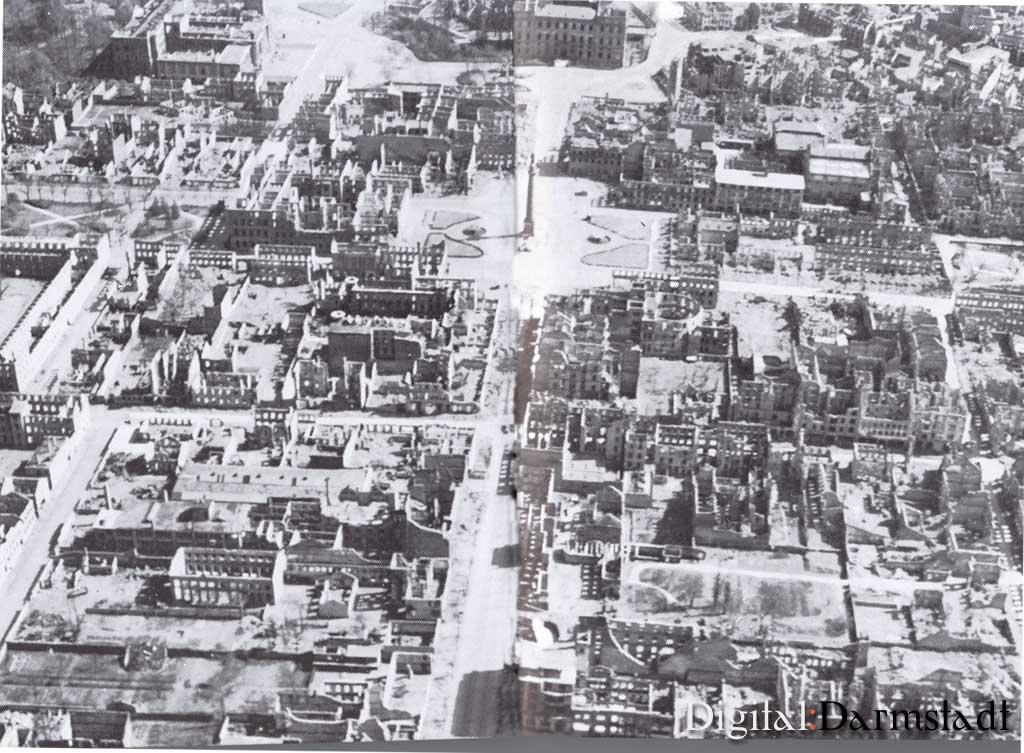
12 September 1944
after the bombing
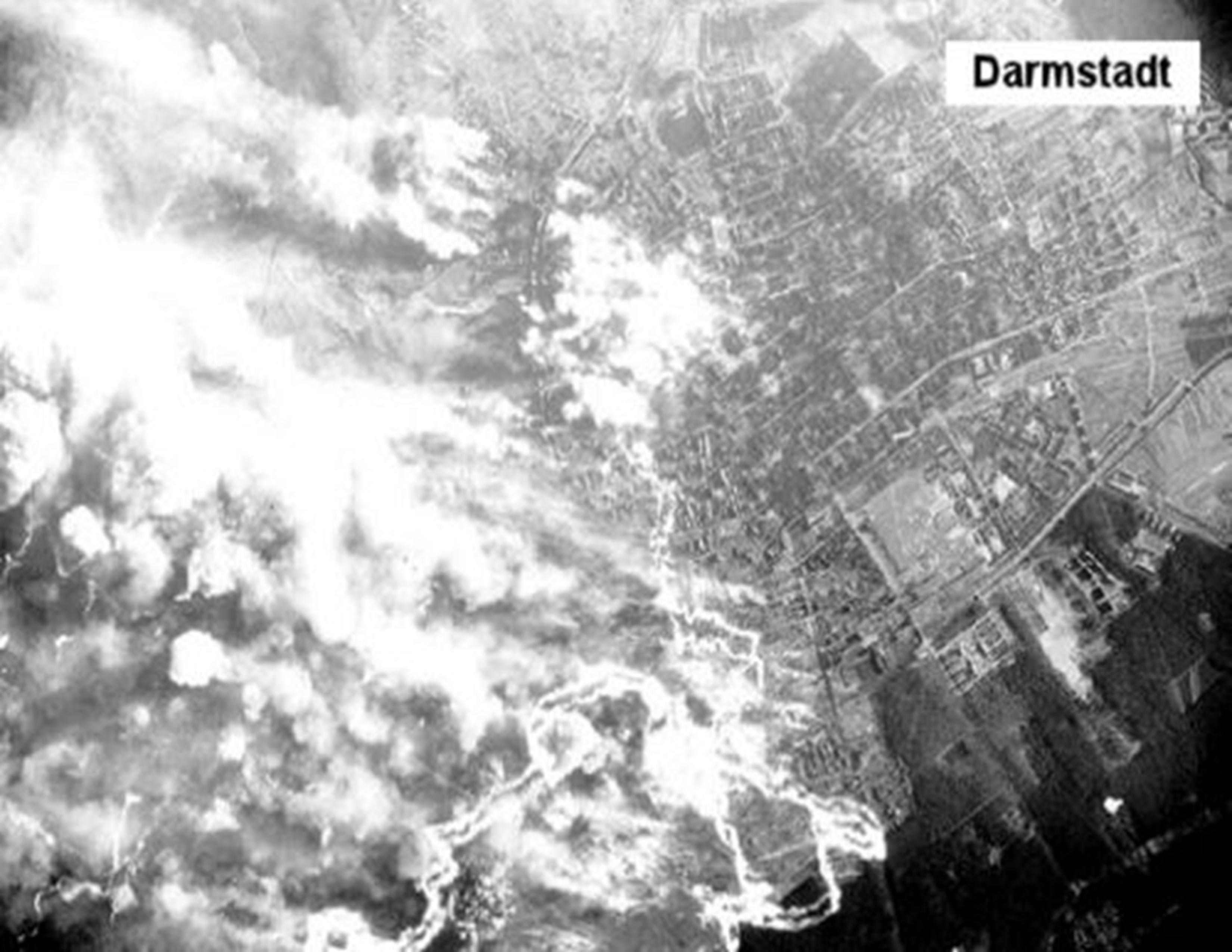
US photo recon on 12 September, 1944. During the night "...234 air mines, 500 explosive bombs, 300,000 incendiary bombs..." (On-line article) were dropped over Darmstadt. Over 80% of the city center was destroyed, putting Darmstadt in the top ten of most heavily destroyed cities in Germany during WW2. (On-line Archives)
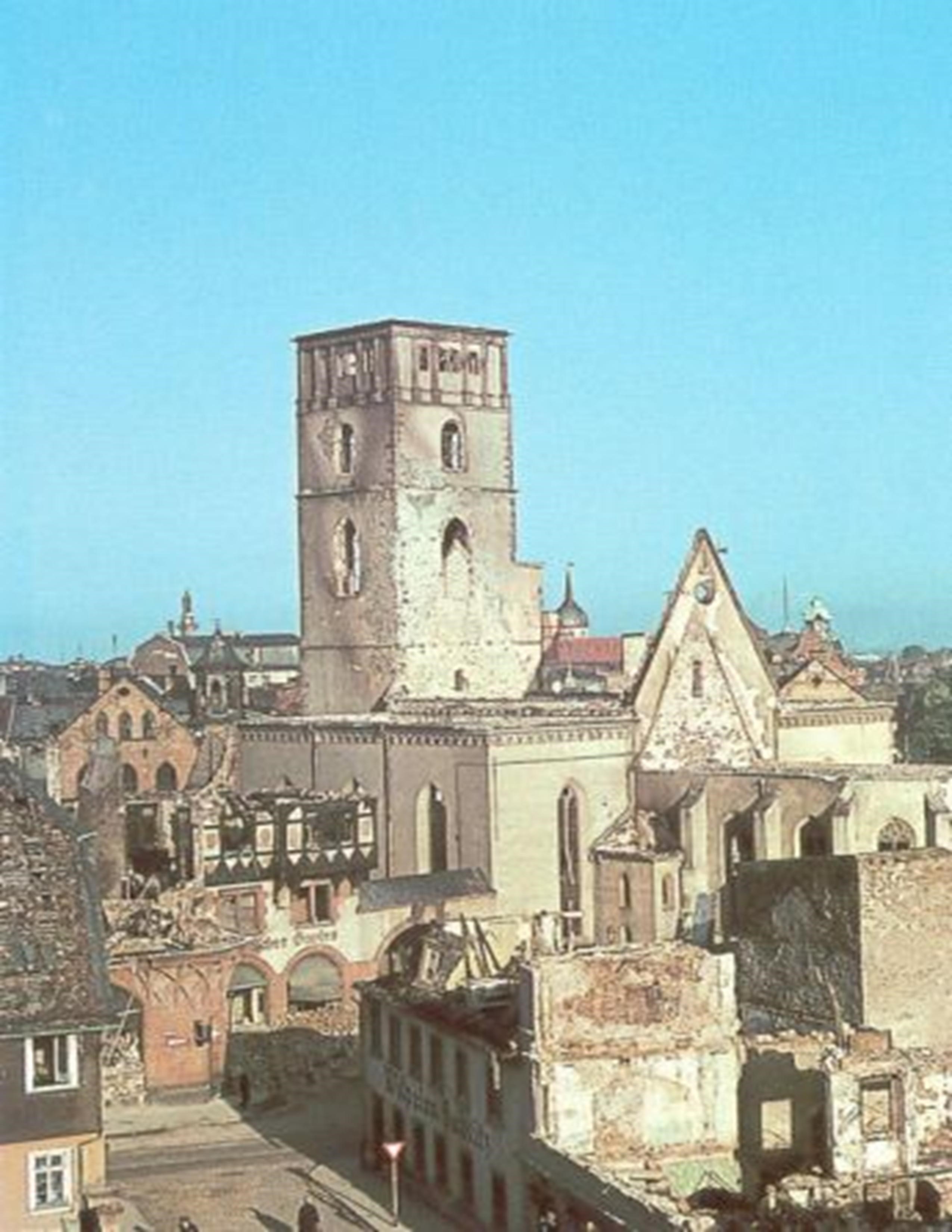
St. Peter's Church (Stadtarchiv)
.jpg)
Old City Wall (Stadtarchiv)
.jpg)
City Museum and Opera House (Stadtarchiv)
.jpg)
City Schloss (Stadtarchiv)
.jpg)
City Center (Stadtarchiv)
Neuer Kavallerie Kaserne Vehicle Garage (Robinson Archives)
.jpg)
.jpg)


Another view of the city center, looking up Rheinstrasse. (Digital Darmstadt)

Click here to change this text. Please do not copy and paste text into the editor.
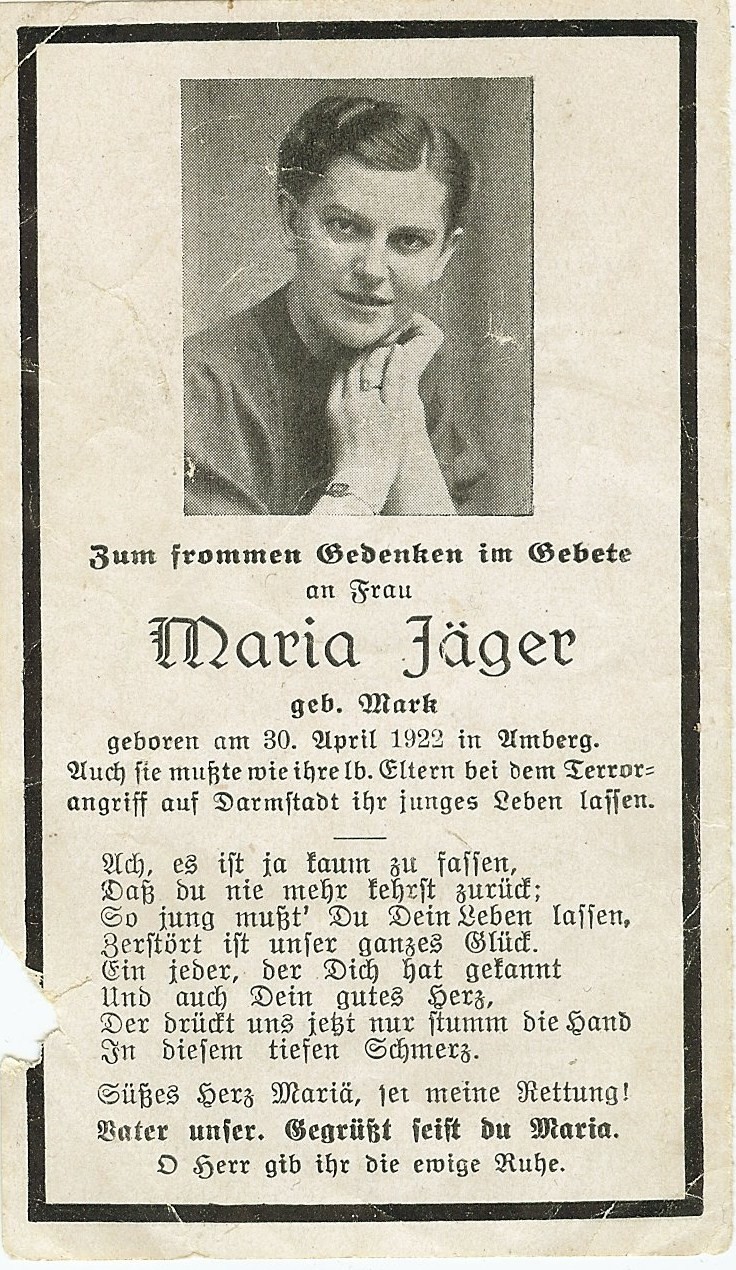
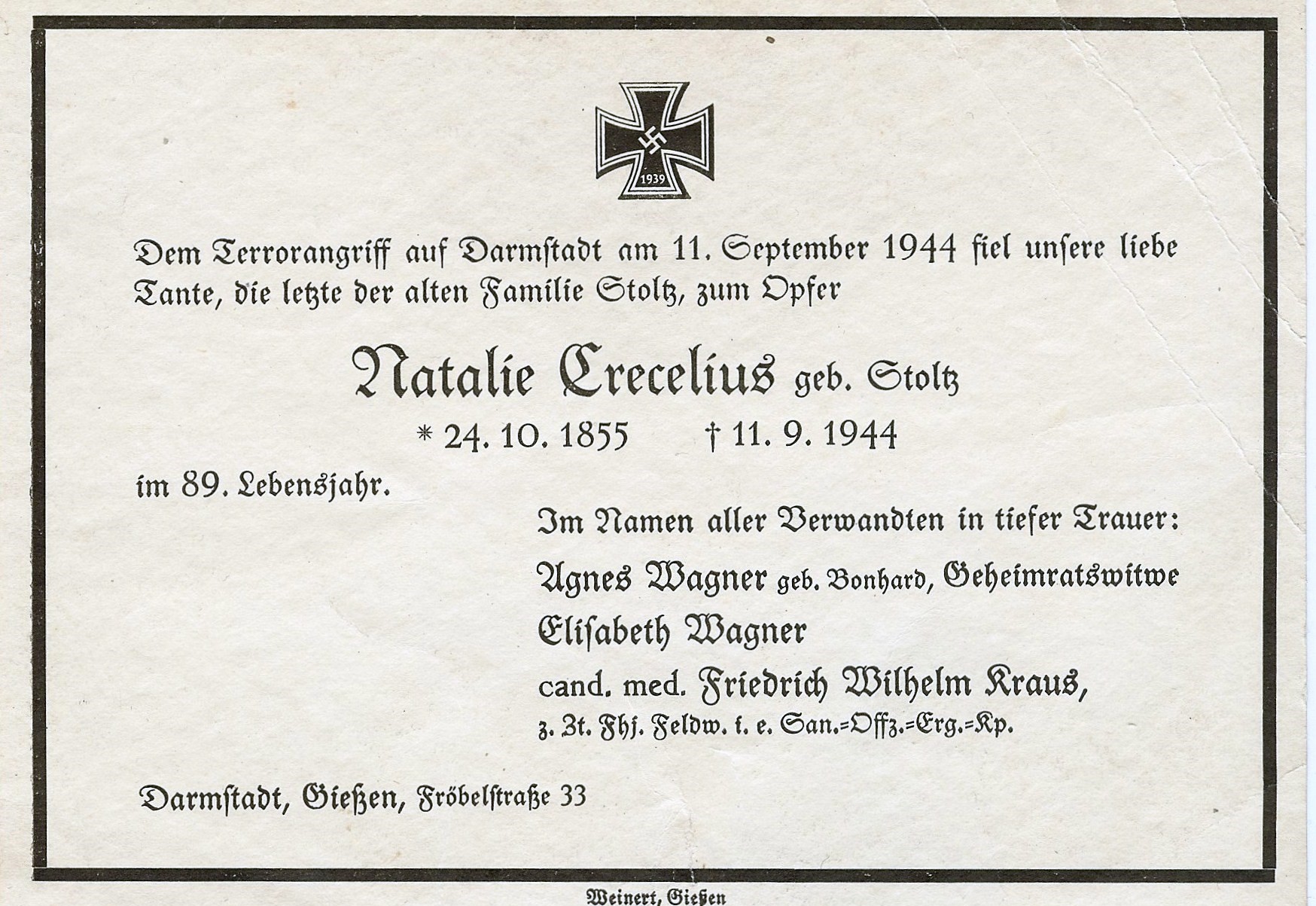
German Death Card (Robinson Archives)
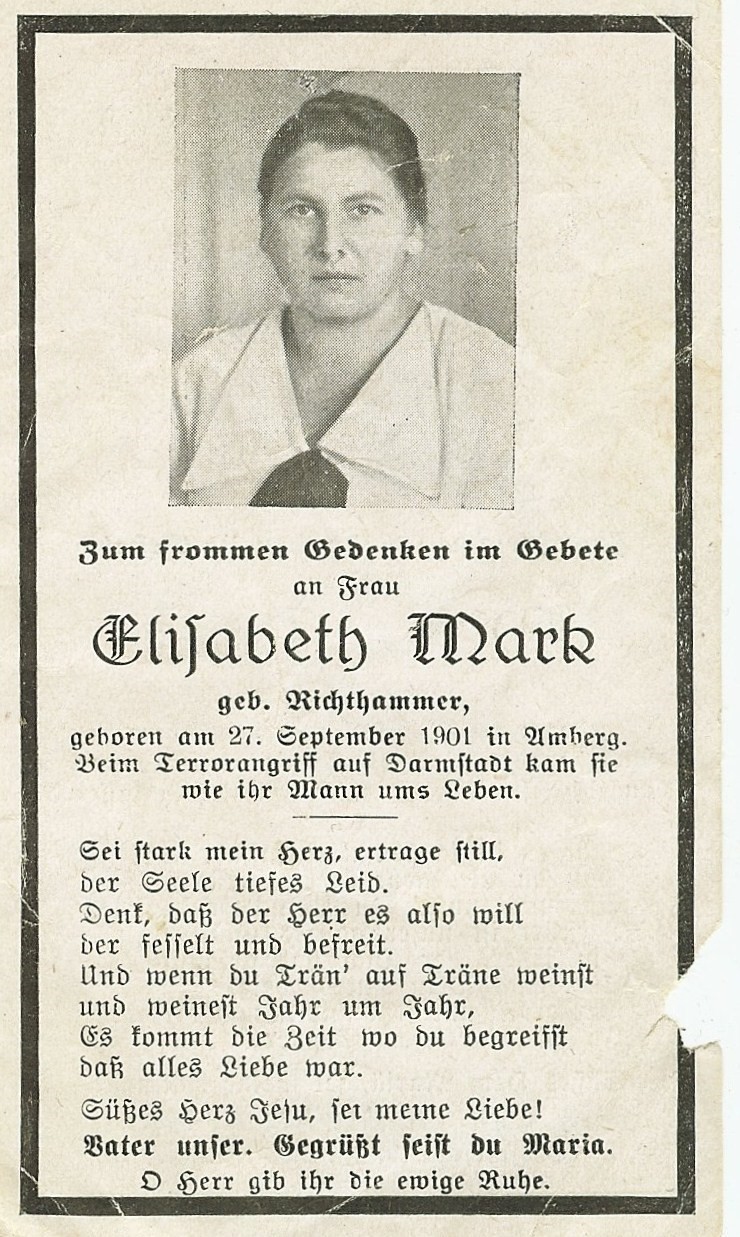
German Death Card (Robinson Archives)
.jpg)
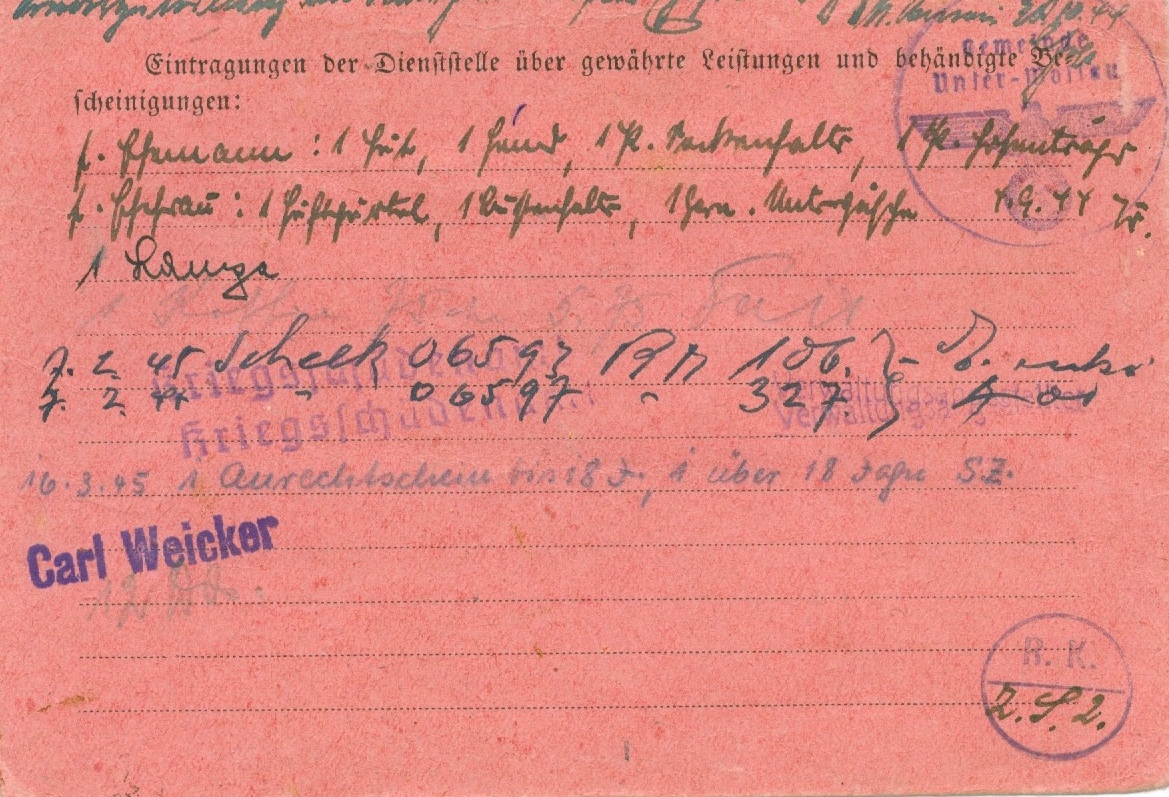
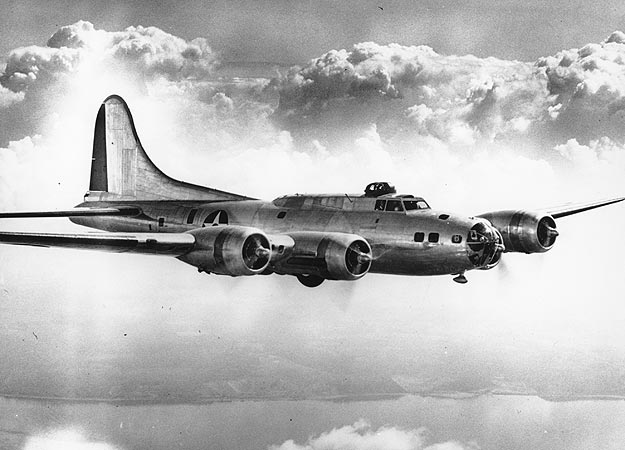
US Raids to Darmstadt
1944
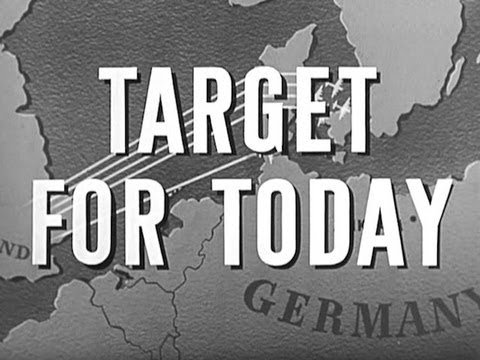
US raids over Germany followed the same planning as those of Britain. There would have been calls from 8th AAF headquarters to the assigned bomber group bases throughout Britain. Pilots and crews gathered in their briefing rooms for the days mission. In the months after the 11 September bombing of Darmstadt, US planes were the only ones hit targets in Darmstadt.
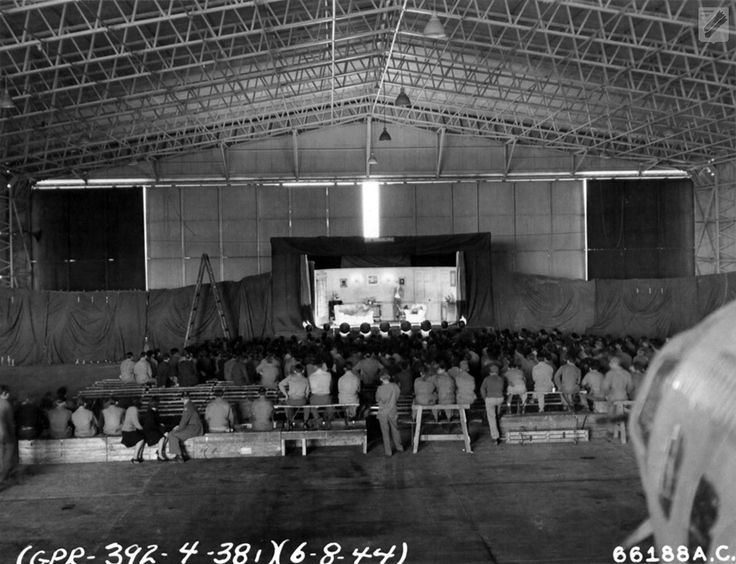
This briefing is probably in a hangar at one of the air bases located in southeast Britain. Many briefings rooms were much smaller.
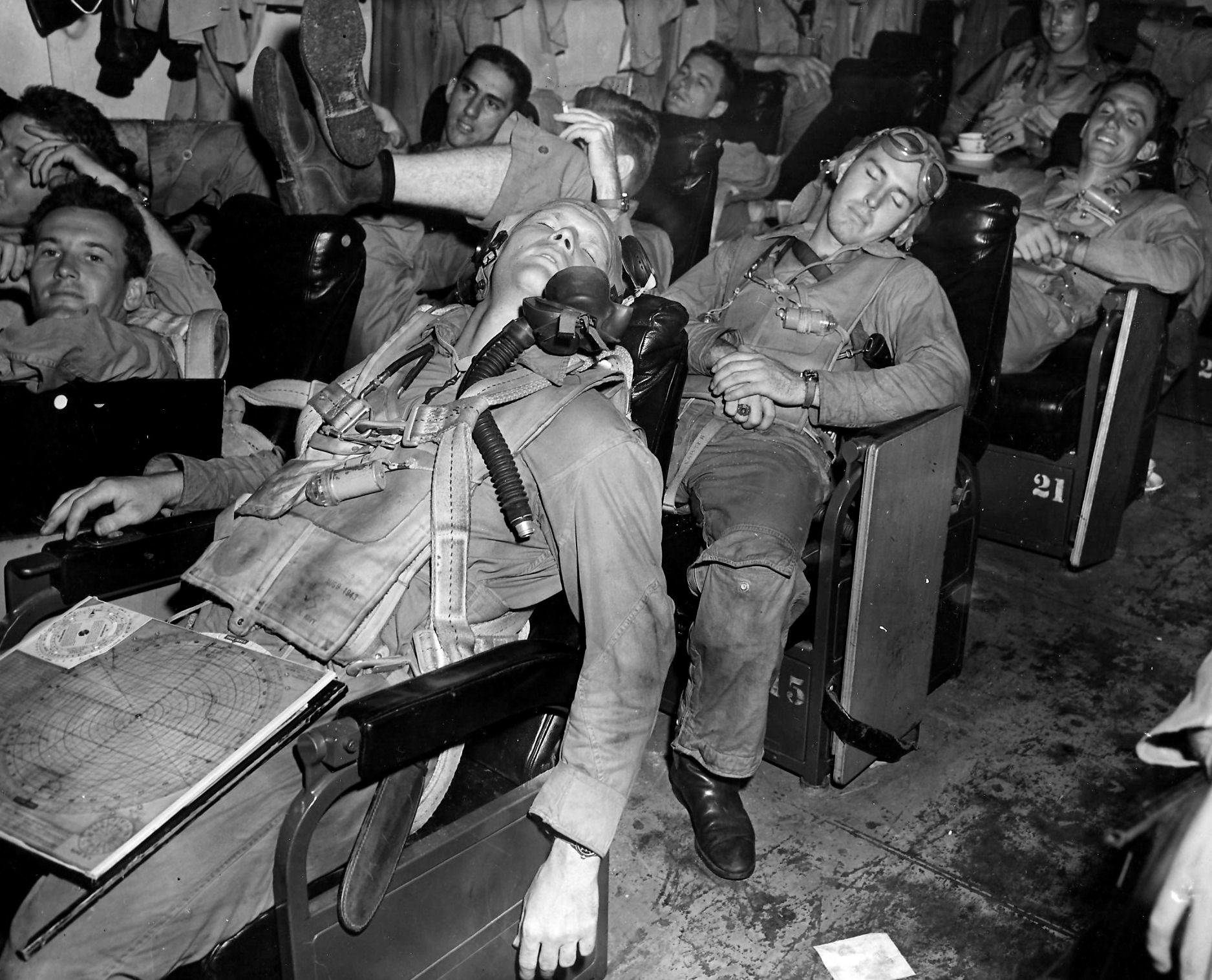
Not all those being briefed stayed awake in this briefing.
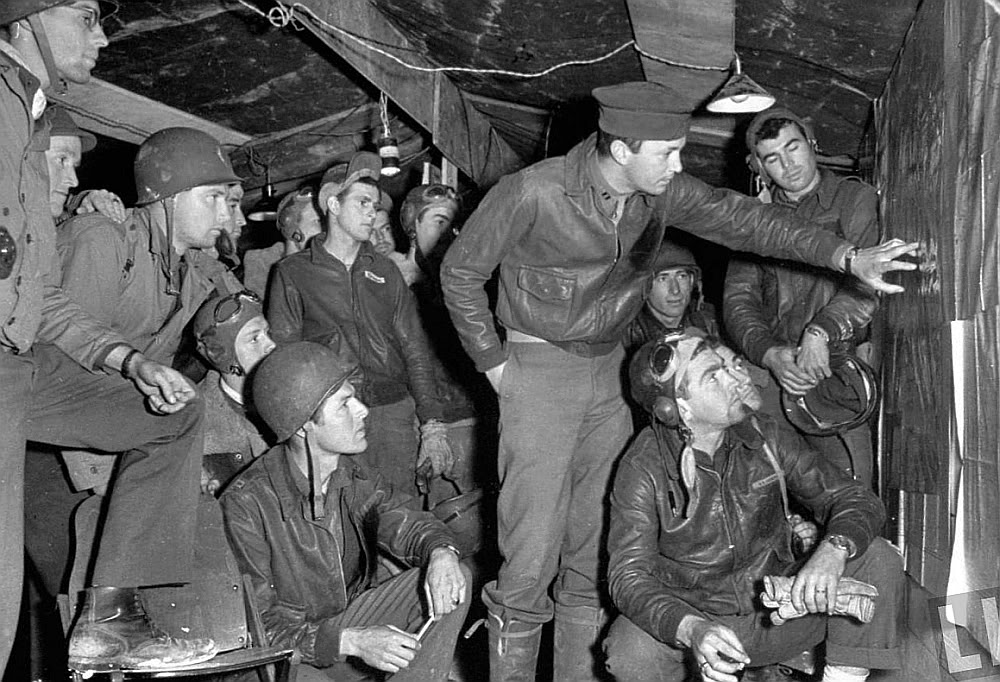
Pilots and crew checking the assignment board, making sure all knew the target and their assignments.
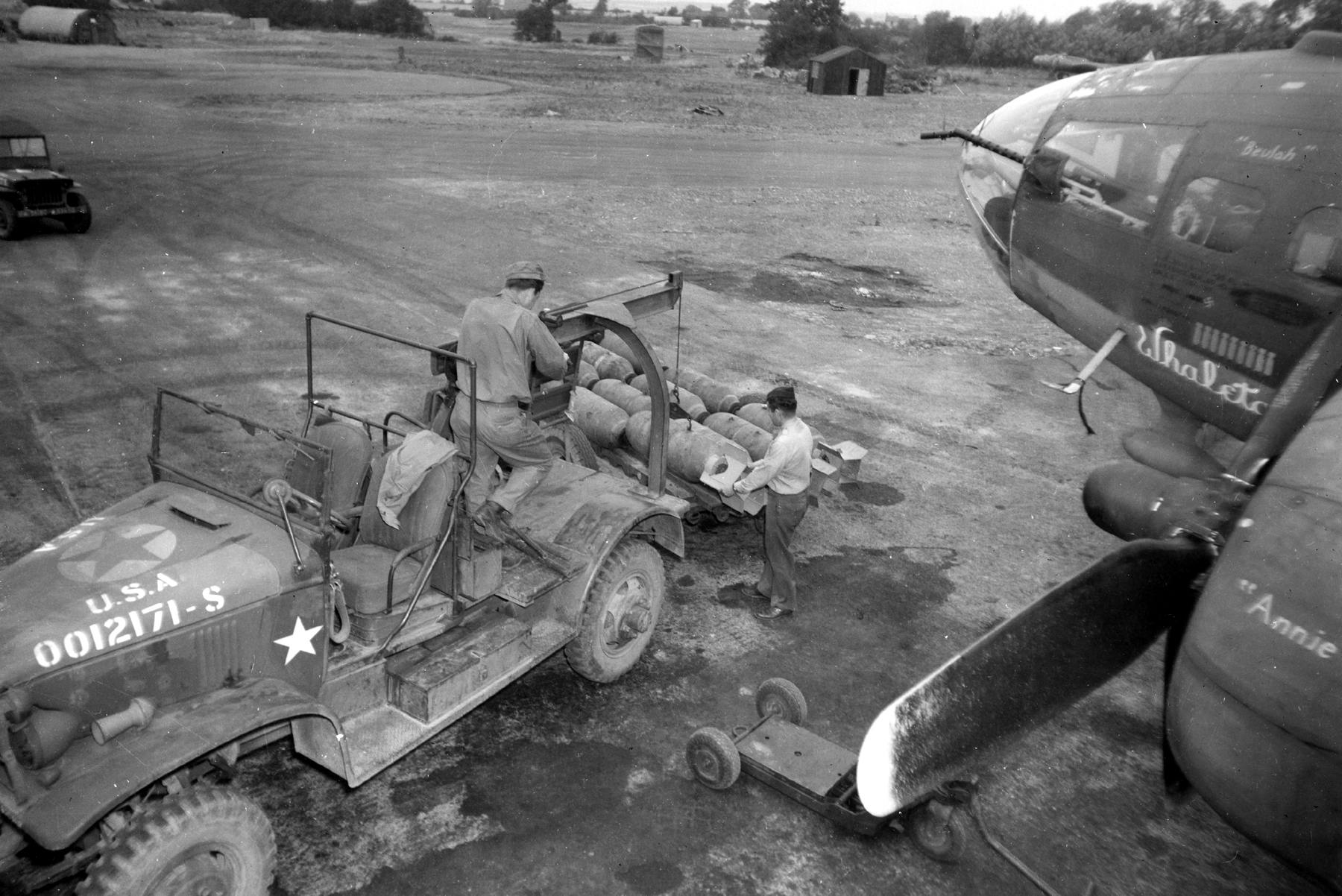
Ground crew preparing bombs to load into a B17.
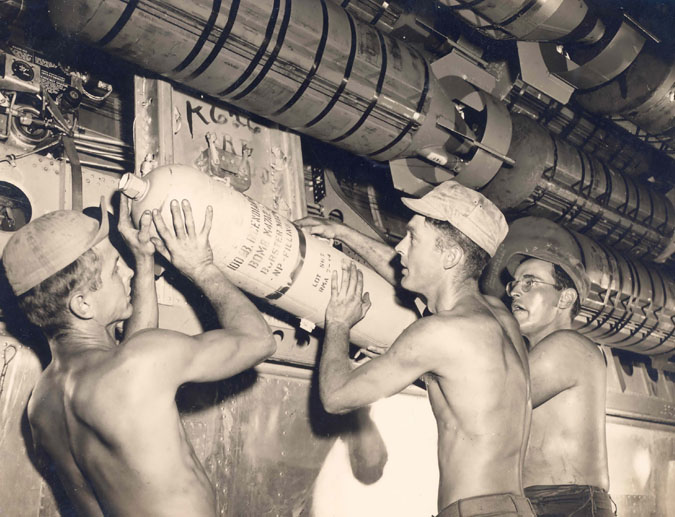
Inside the bomb bay with bombs in their racks.
.jpg)
B17, Nine o Nine, at the Owls Head Transportation Museum in 2007. This plane, along with a B26, travels around the US to various air shows. The swastikas represents three planes shot down. Each bomb represents a bomb run. (Robinson Archives)
.jpg)
Bombs in a rack on the Nine o Nine (Robinson Archives)
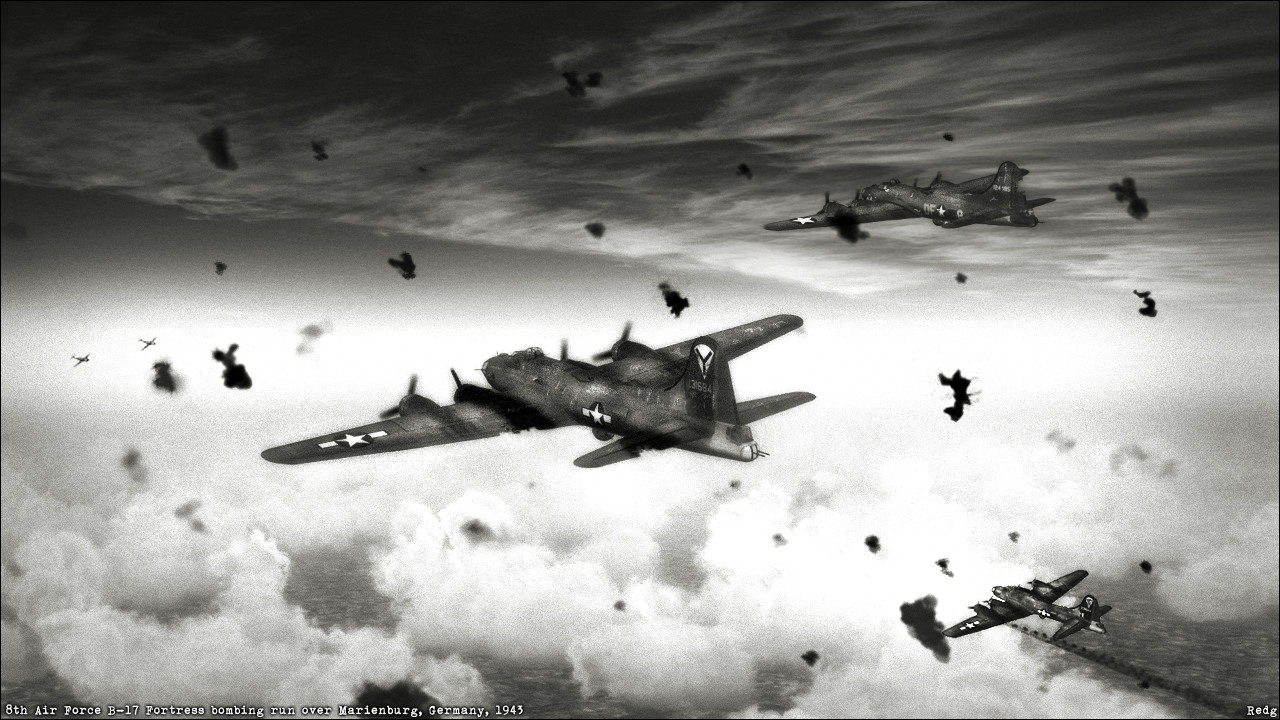
B17's over Germany, flying through flack from ground anti-aircraft guns. The plane in the lower left has sustained damage.
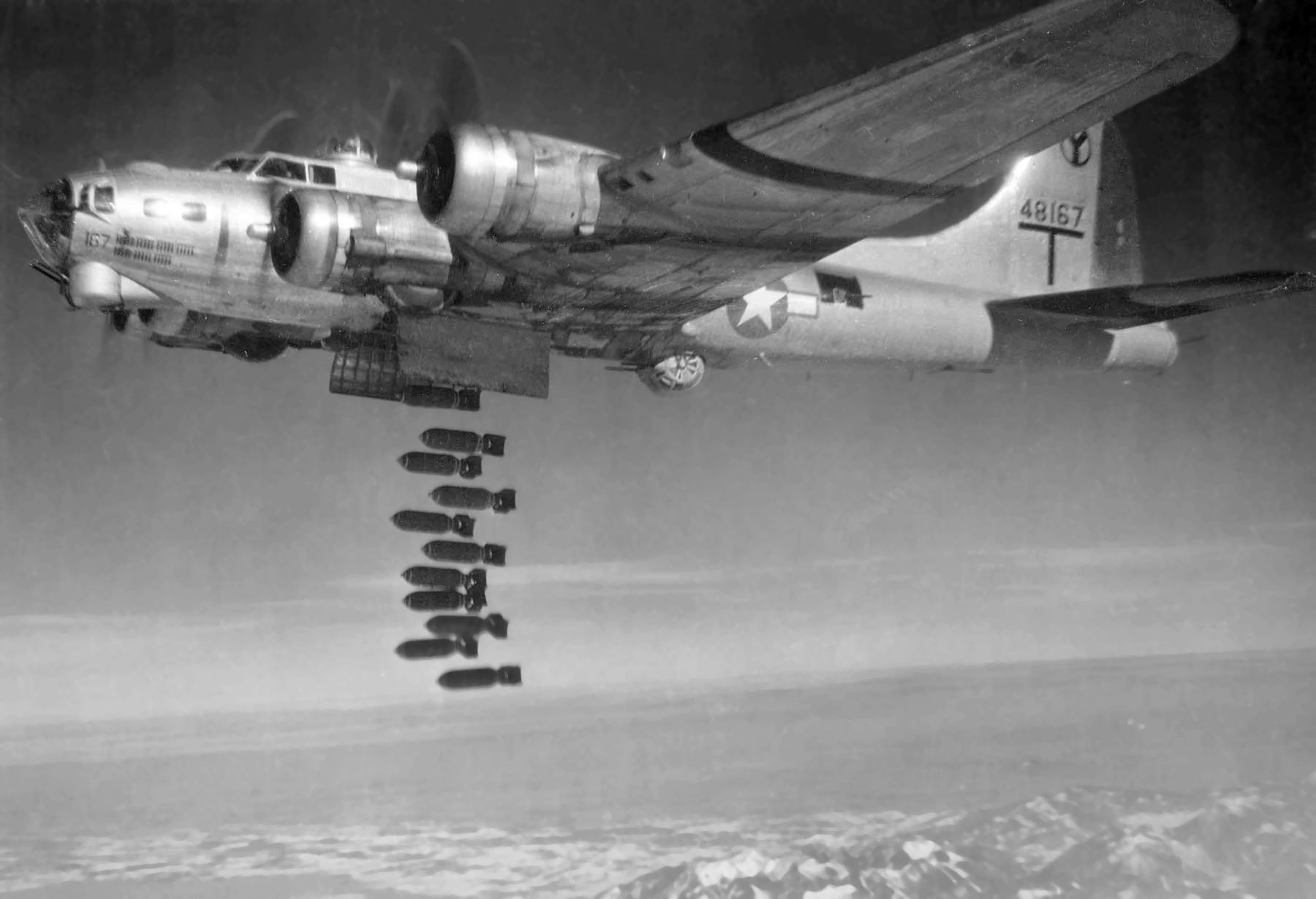
"Bombs away!"
US Bomb Run on 13 September 1944 (Robinson Archives)
.jpg)
.jpg)
.jpg)
.jpg)
.jpg)
.jpg)
US Bomb Run on 12 December 1944 (Robinson Archives)
.jpg)
.jpg)
.jpg)
.jpg)
This is a very interesting photo for me. Inges home is near the Merck pharmacutical company, lying a half mile or so from the plant. The housing complex seen here was called Siedlung Hardt and was built as a project during the Third Reich. The two rows at the top of the complex are duplex homes, while the third row are all single family homes. Inges family home is the left hand duplex, far right, top row. The four white spots, with black centers, are all bomb strikes from an overshoot on a bomb run to to take out the pharmacutical plant. (Stadtarchiv)